Boab Tree Pictures
Outback Photo Gallery
On this page you find a selection of pictures of boab trees.
Those weird and wonderful bottle trees grow everywhere in the Western Australia Kimberley region.
As plentiful as they are here, they can't be found anywhere else in the world...
Boab Tree Pictures 1
A sunset behind a tree on a bluff, right behind my house
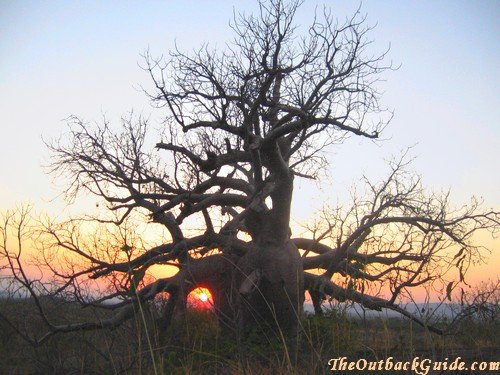
Every night I take my dog for a walk through the "City of Ruins", an area of colourful and unusual sandstone formations in Kununurra. If we have the time we climb up one of the hills to watch the sunset. This hill is my favourite.
You will find many interesting native trees, shrubs and wildflowers (during and after the wet season) along the walking paths through the area, and of course many boabs. Go late in the day or very early in the morning to take the best photos of the intense colours of the sandstone.
Boab Tree Pictures 2
Two for the price of one
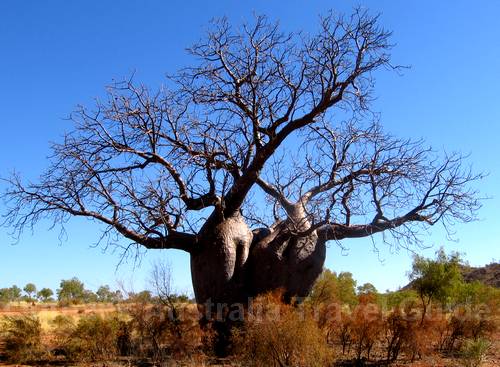
Is it one or two? You will often see boabs with more than one trunk. In this case the young tree developed two shoots many hundred years ago.
The tree is standing next to a track on Springvale Station, a large cattle station (ranch) in the Kimberley. It was the middle of the day and its shade was welcome during our lunch break.
Boab Tree Pictures 3
Twins
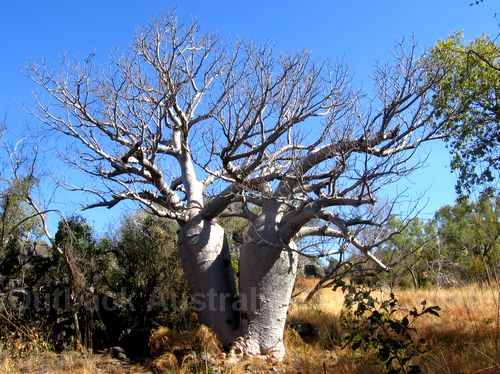
I photographed this tree, or trees, in Gregory National Park. Gregory lies in the Northern Territory, not far from the border into Western Australia and the Kimberley.
So when I say that our bottle trees grow only in the Kimberley I'm not being precise. Fact is, they don't care much about our borders and their range extends a few hundred kilometres into the Territory. But then again, what's a few hundred kilometres in the Australian Outback...
Bottle Tree Pictures 4
And another one
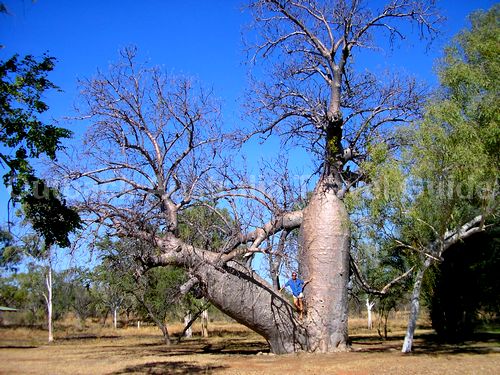
Another double-trunk tree in Gregory National Park. This one is found in front of the historical Bullita Homestead. And that's me standing in it.
Bottle Tree Pictures 5
Bottle trees against the sunset
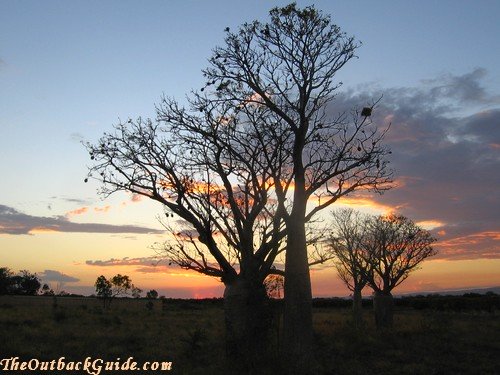
A selection of shapes and sizes: some short and squat, some tall and more... bottley (is that a word?). These trees grow on the mango plantation of one of my friends, not far from his shed.
When you visit fruit farms in the Kimberley you will often find a similar picture: farmers who grow their crop around these ancient giants. Unfortunately there are just as many if not more farmers who just flatten everything.
I had to witness several hectares of old growth bottle tree forest (yes, a proper forest of them) being pushed over by dozers to make room for more watermelons. Many of the trees were well over 1000 years old... but it doesn't mean much to most people. Only money does...
Boab Tree Pictures 6
Boab Nuts
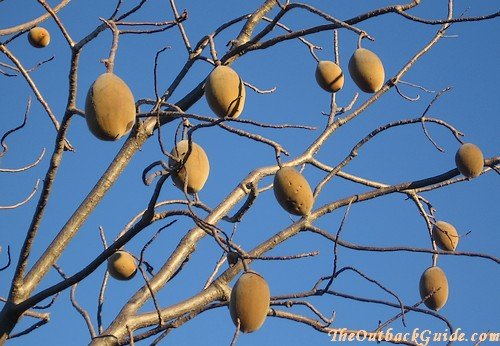
This is one of the few pictures where you can see the fruit of the tree, the boab nuts, still clinging to the branches. The next storm will most likely blow them off and smash them on the ground...
Bottle Tree Pictures 7
Family of Boabs
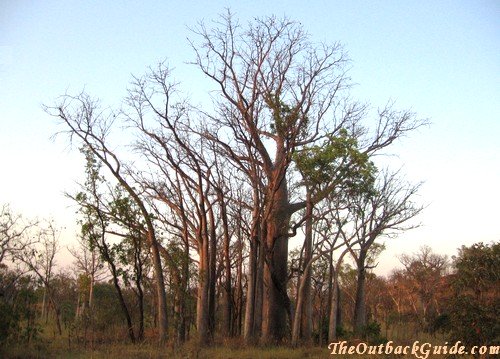
... where they germinate during the wet season. What you end up with is called a "family".
Bottle Tree Pictures 8
Environmental threats
These giant trees appear so invincible. However, they certainly are not. Farming currently only affects a tiny percentage of them, but environmental weeds spread through a much larger area, faster and faster every year. Birds and bats spread the seeds of mahogany, cashew and neem trees (the worst!), and all of those grow incredibly fast up here. Much faster than boabs.
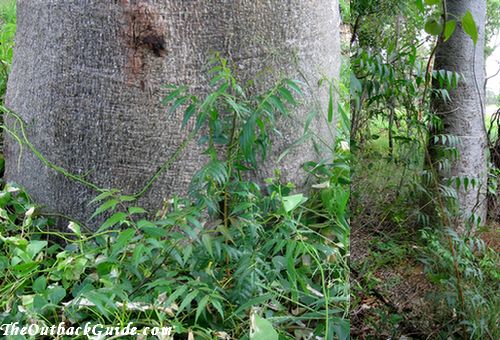
Birds drop the seeds when they roost. It only takes a few years for neem trees to grow up and choke a native tree to death. And only a couple years more to shade out a giant boab. Keep your eyes open when you are in the East Kimberley. You'll soon spot neem trees everywhere...
(If you wonder how they got here, the Department of Agriculture planted them! Because neem oil would be such a wonderful thing to produce and make money with...)
You can read more information about boab trees here. They're interesting trees with many uses as food, medicine and shelter.
Next page: Outback Australia Beach Pictures
Australian Outback Picture Gallery main page
Go to Outback Australia Travel Guide home page





